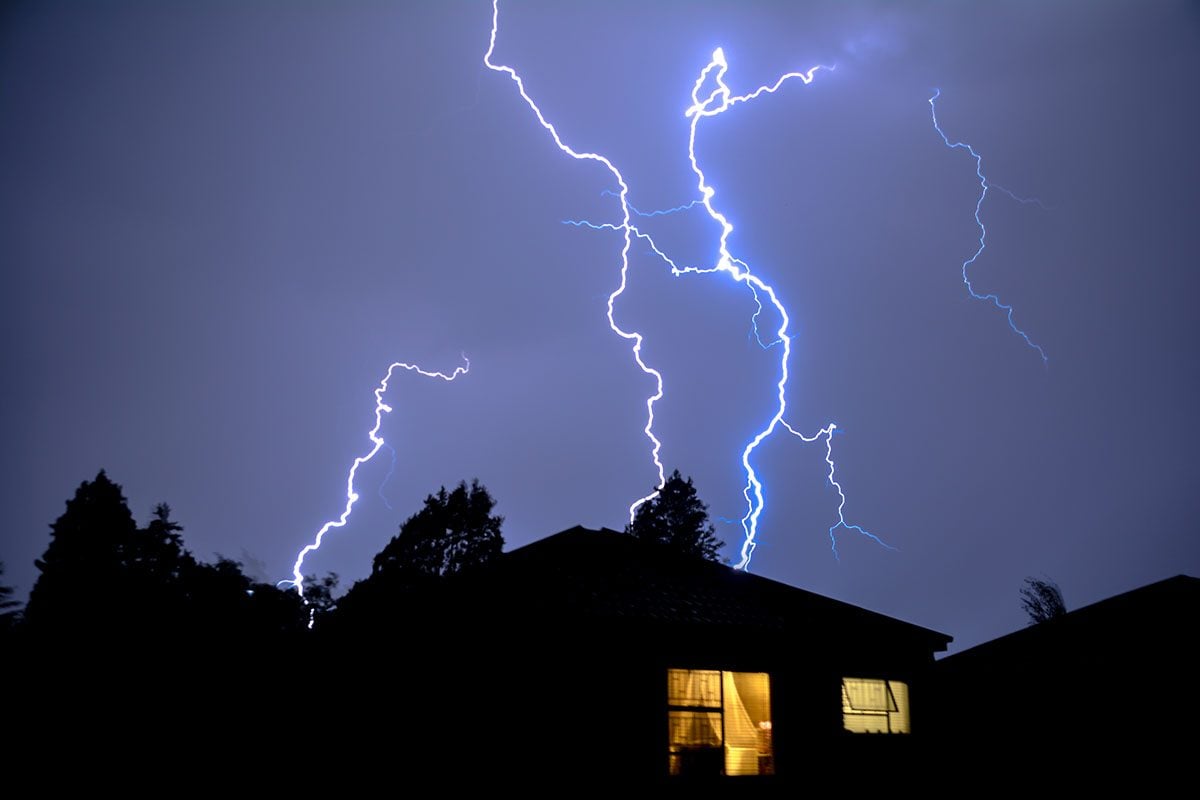A big part of making your home more storm-resistant is removing the things that make it dangerous during a storm in the first place. For example, your storm-resistant windows won’t matter much if you have a large tree leaning toward your house, waiting for a strong gust of wind to take it down. And even if you don’t live in an area prone to hurricanes, there is no telling when Mother Nature will act upon her wrath.

That said, here are the things that make your home dangerous during a storm and the things you need to do about them:
1. Trees
Trees are not inherently dangerous; you shouldn’t cut them down to make your home more stormproof. It all depends on its placement and size relative to your house. For example, if the tree is at the perimeter of your property and is healthy, it is unlikely that it will topple over during a strong storm. But if the tree is too close to your house, is leaning towards your home, and is showing signs of rot, it’s time to hire expert tree removal services as soon as possible.
If you don’t want to cut down the tree and discard it, consider relocating it to another part of your property or donating it to the nearest forest reserve. While this may cost more money than simply felling the tree, it can ensure that those decades of growth won’t go to waste.
2. Drafty windows
If your windows are drafty, imagine how much wind and water will enter during a storm. And if the wind is strong enough, drafty windows are much more susceptible to cracking and breaking, which can pose a severe danger to your safety.
That said, address drafty windows as soon as possible. Layer your window treatments, apply to weatherstrip, and fill gaps to seal windows. Use the temporary caulk if you’re pressed for time and the storm is already approaching. Better yet, you may consider upgrading to storm-resistant windows that can withstand strong wind and rain better than regular ones—especially if you live in a hurricane-prone area.
3. Roof damage
Make it a habit to check your roof regularly for signs of damage. If you can’t get up there, hire a roofing professional to inspect you. The importance of checking your windows is that it helps prevent further damage in the event of a storm, where torrential rains and heavy winds can easily damage your shingles and the materials underneath.
Furthermore, existing damage can make it easier for moisture to seep in, leading to even further damage to your roof. In worst-case scenarios, the rain can leak into your attic and weaken the structural integrity of your home.
If the roof inspection shows signs of damage, address them immediately. Not only does this help prevent danger during a storm, but it can also help you save money by avoiding further damage from occurring regardless of the weather.
4. Weak foundation
Like roof damage, having a weak foundation can make your home more susceptible to storm damage. During a storm, the rain can be heavy enough to soften the soil underneath your house—and if your foundation is already weak, the soft ground can cause further foundation issues to develop.
Examples of foundation problems include:
- Foundation cracks
- Wall and floor cracks
- Doors and windows that won’t open/close properly
- Sagging or uneven floors
- Gaps around windows and doors
If you already see one or more of these issues in your home, it’s time to call a foundation expert as soon as possible. The longer these problems develop, the harder they are to repair. And in most cases, repairing a foundation can be very expensive—more so if you have to replace your foundation entirely.
5. Yard stuff
Unsecured playground equipment, gardening tools, outdoor furniture, and other yard items need securing before a storm comes your way. Heavy winds can easily throw these items elsewhere or smash them into your windows, causing hundreds—if not thousands—of dollars worth of damage.
Luckily, it is easy to avoid this problem. Secure heavy outdoor items to the ground and store lighter items inside the garage or shed before the weather turns sour. Avoiding storm damage is not rocket science. Apart from proactively making your home more storm-resistant, addressing the things that make it more susceptible to storm damage is essential, starting with the ones we’ve mentioned in this guide.




